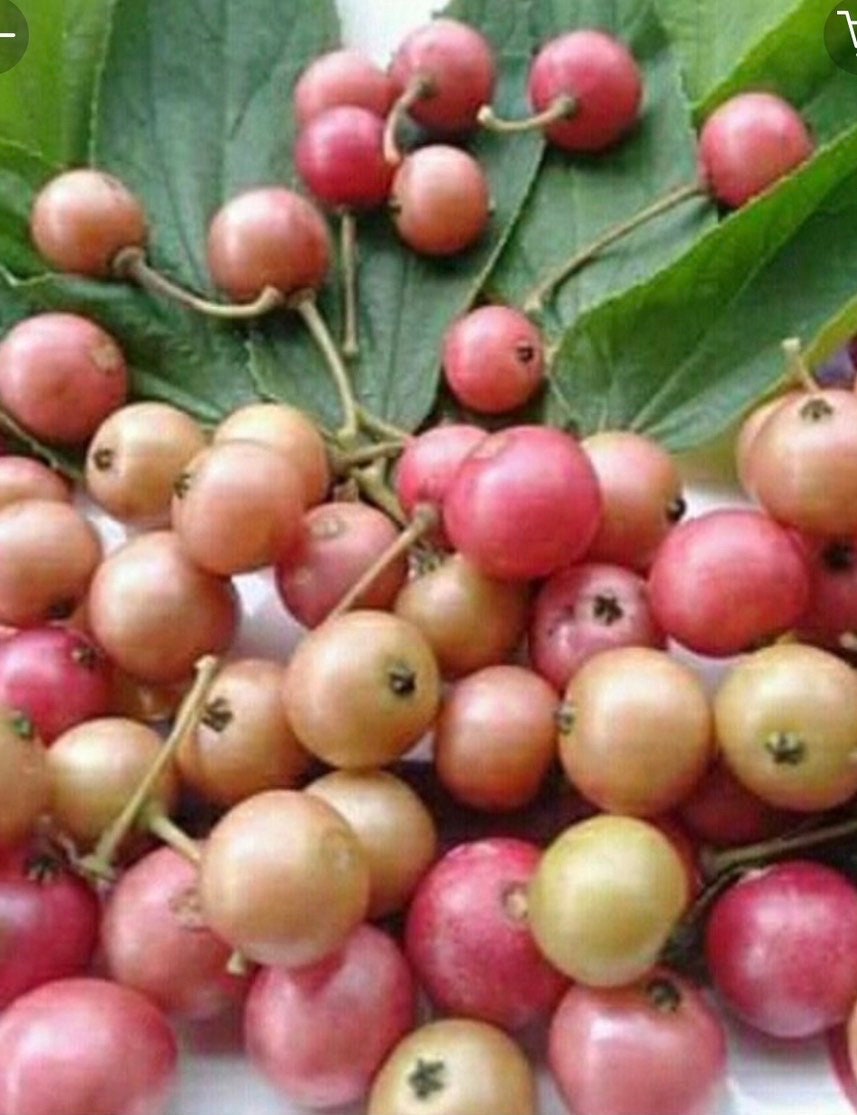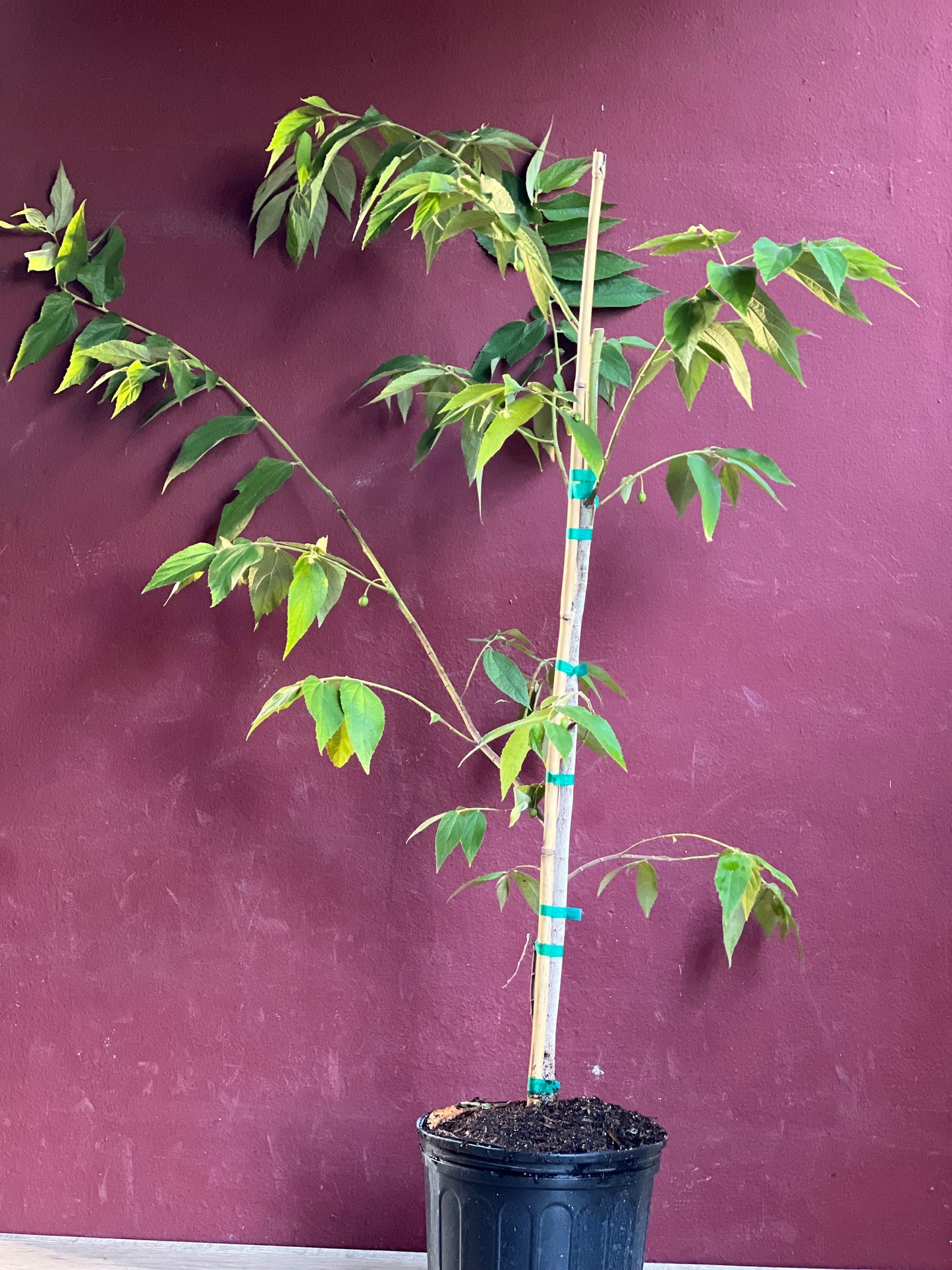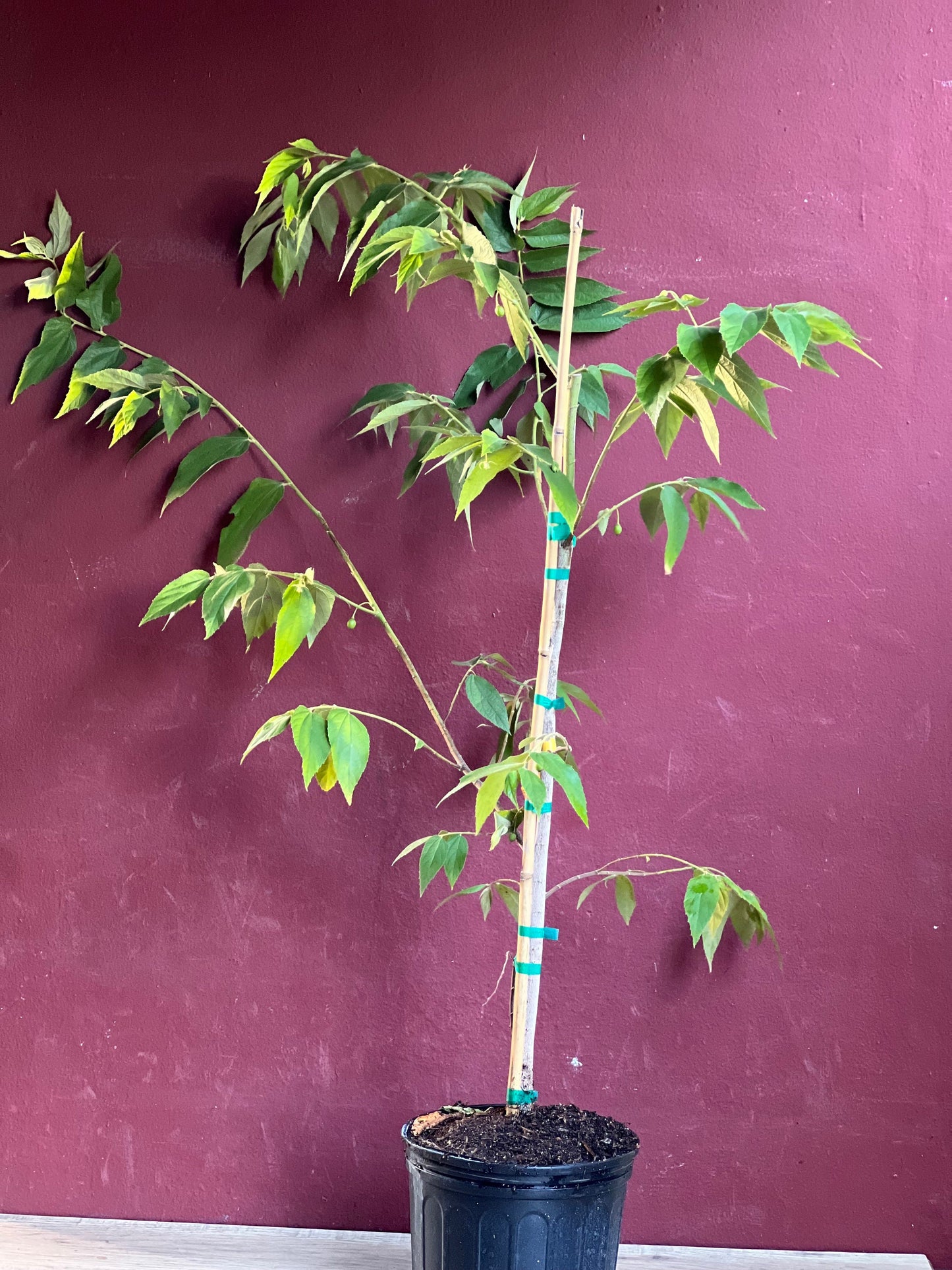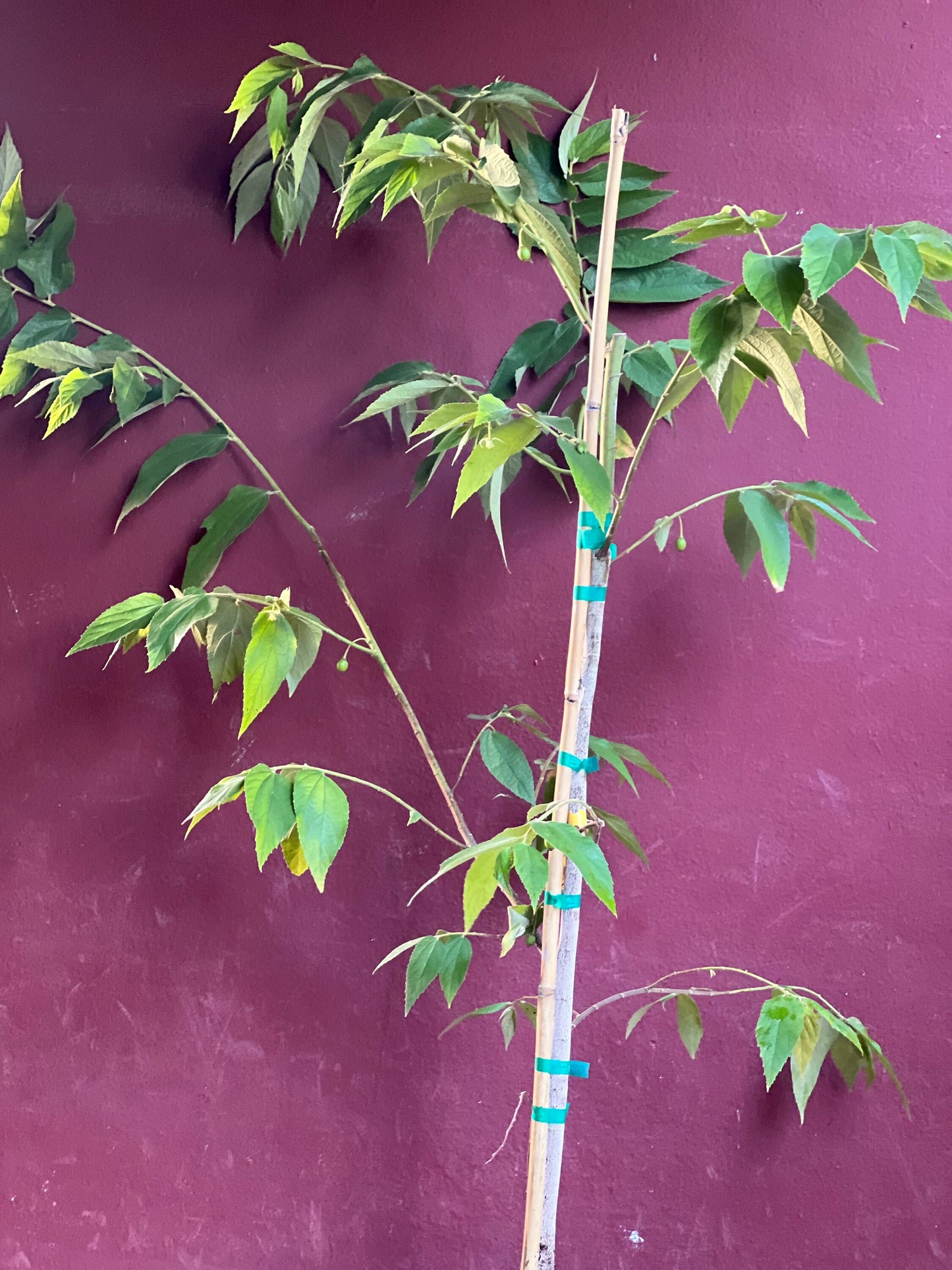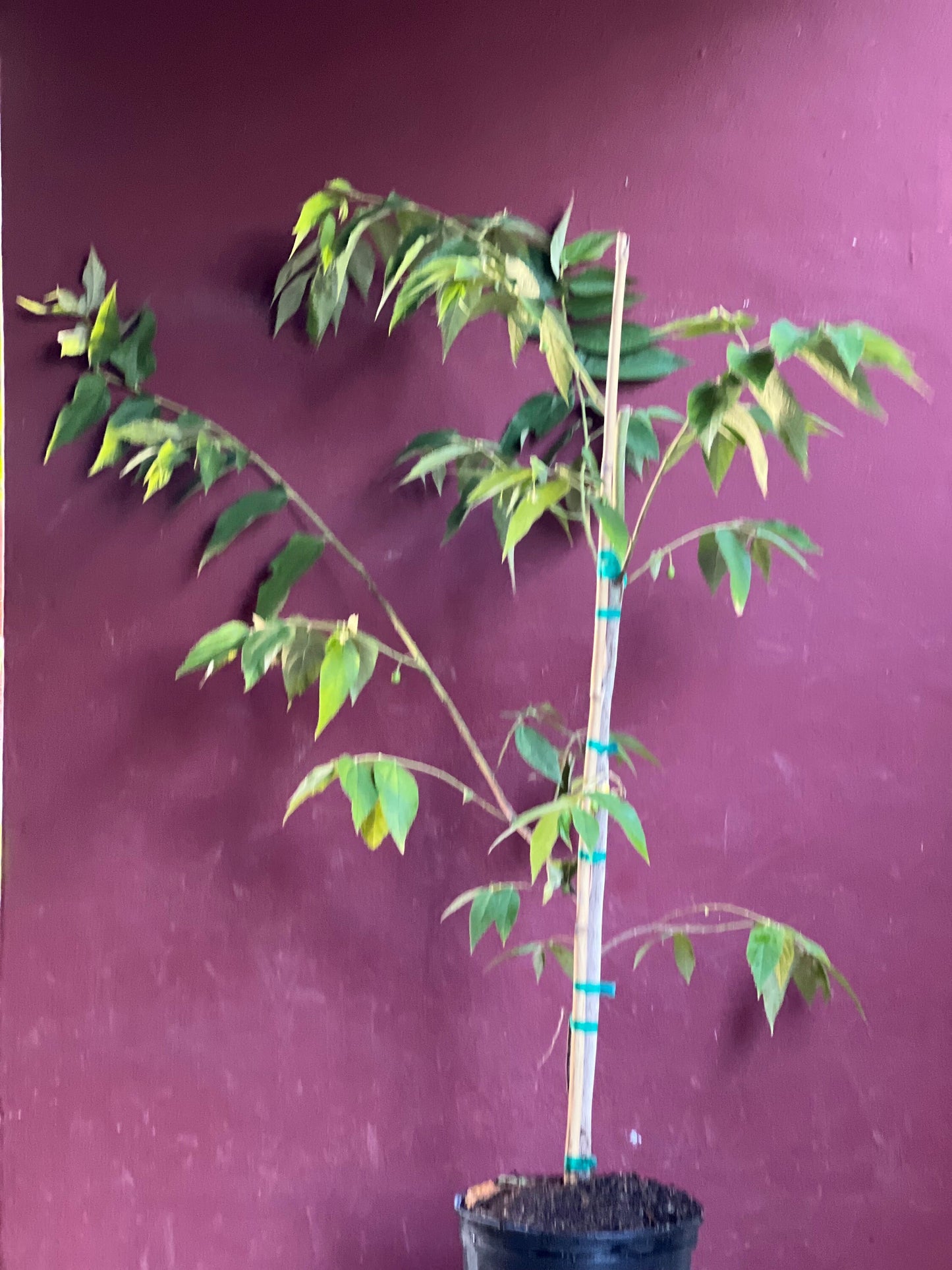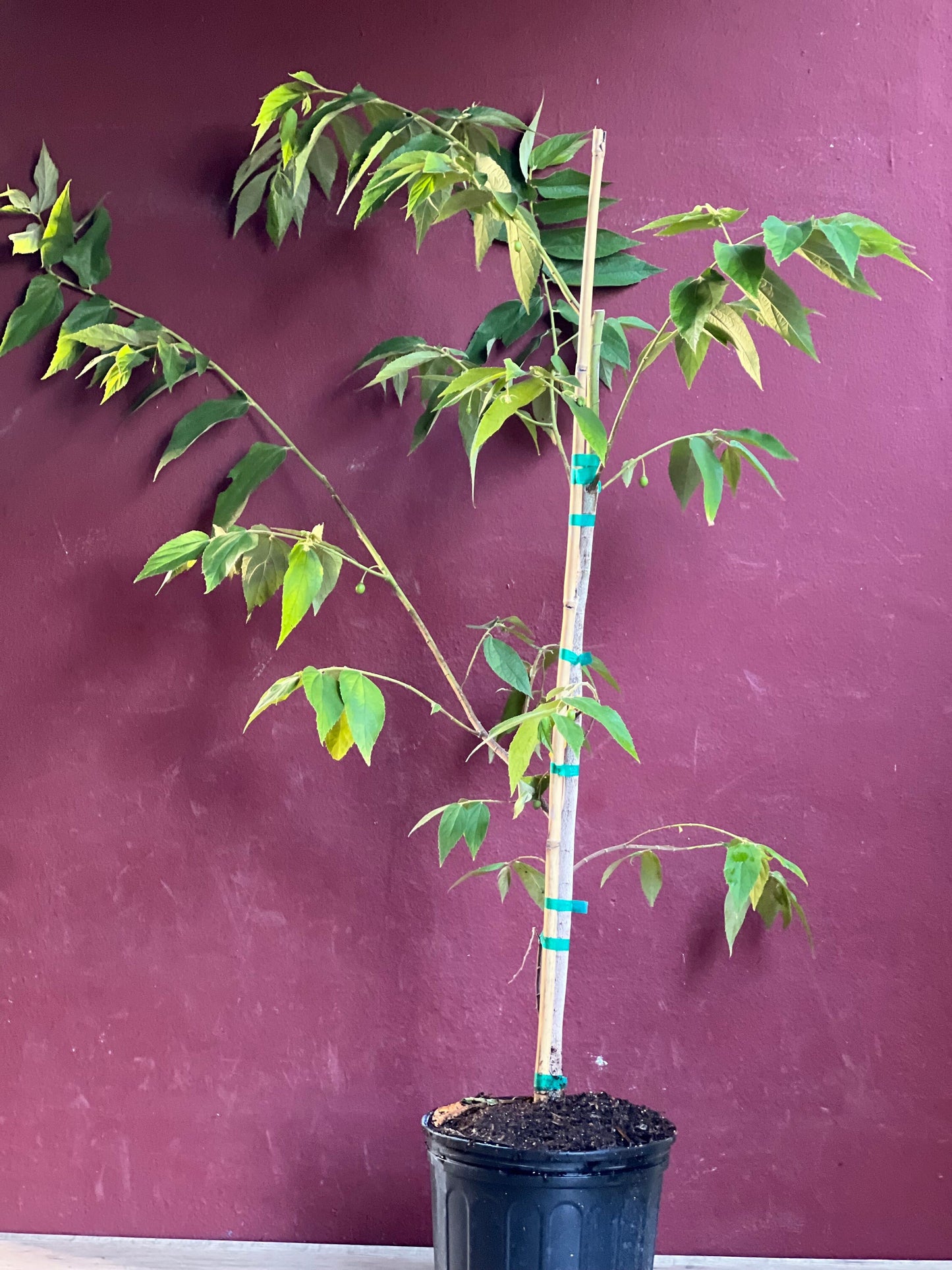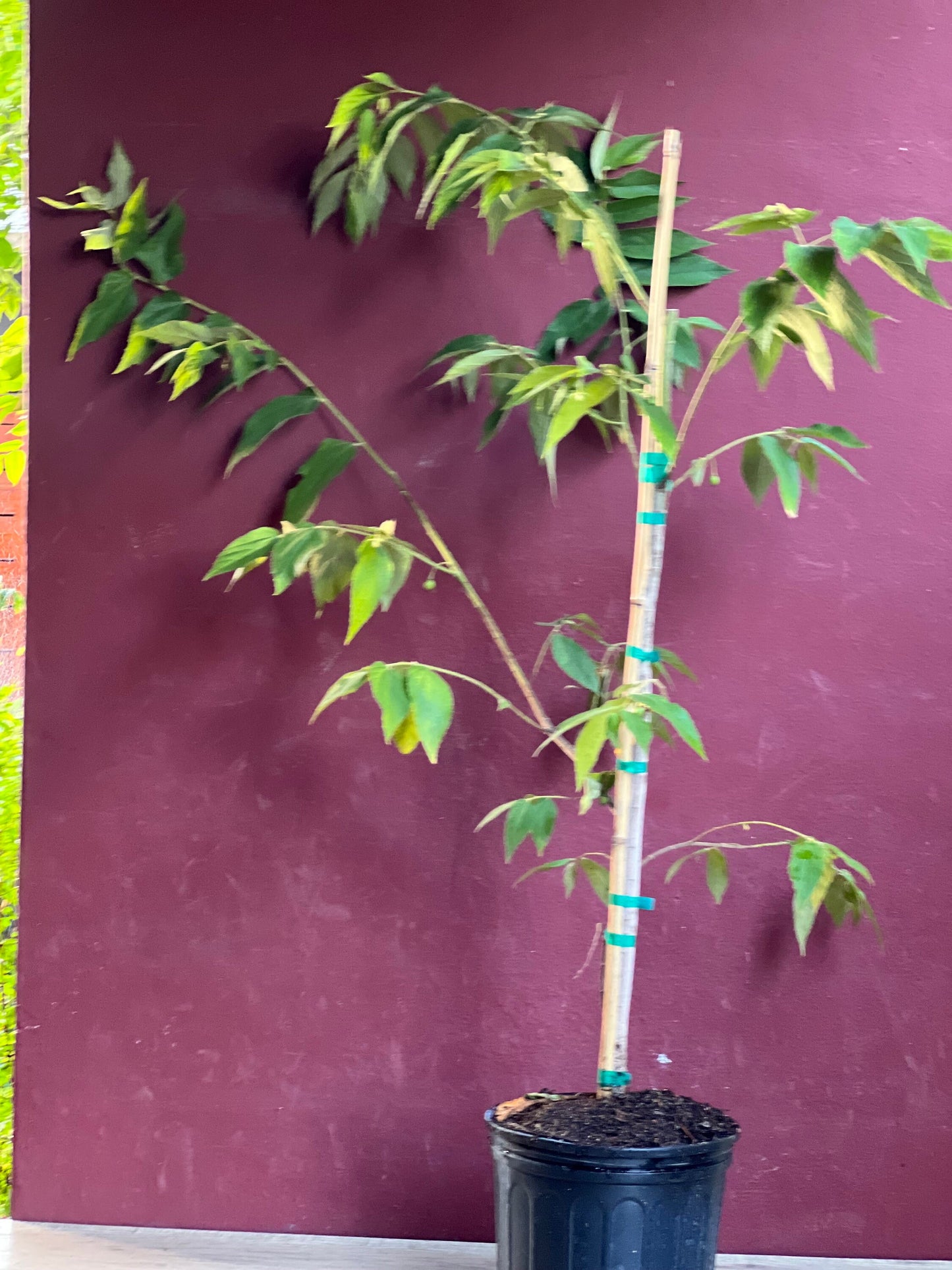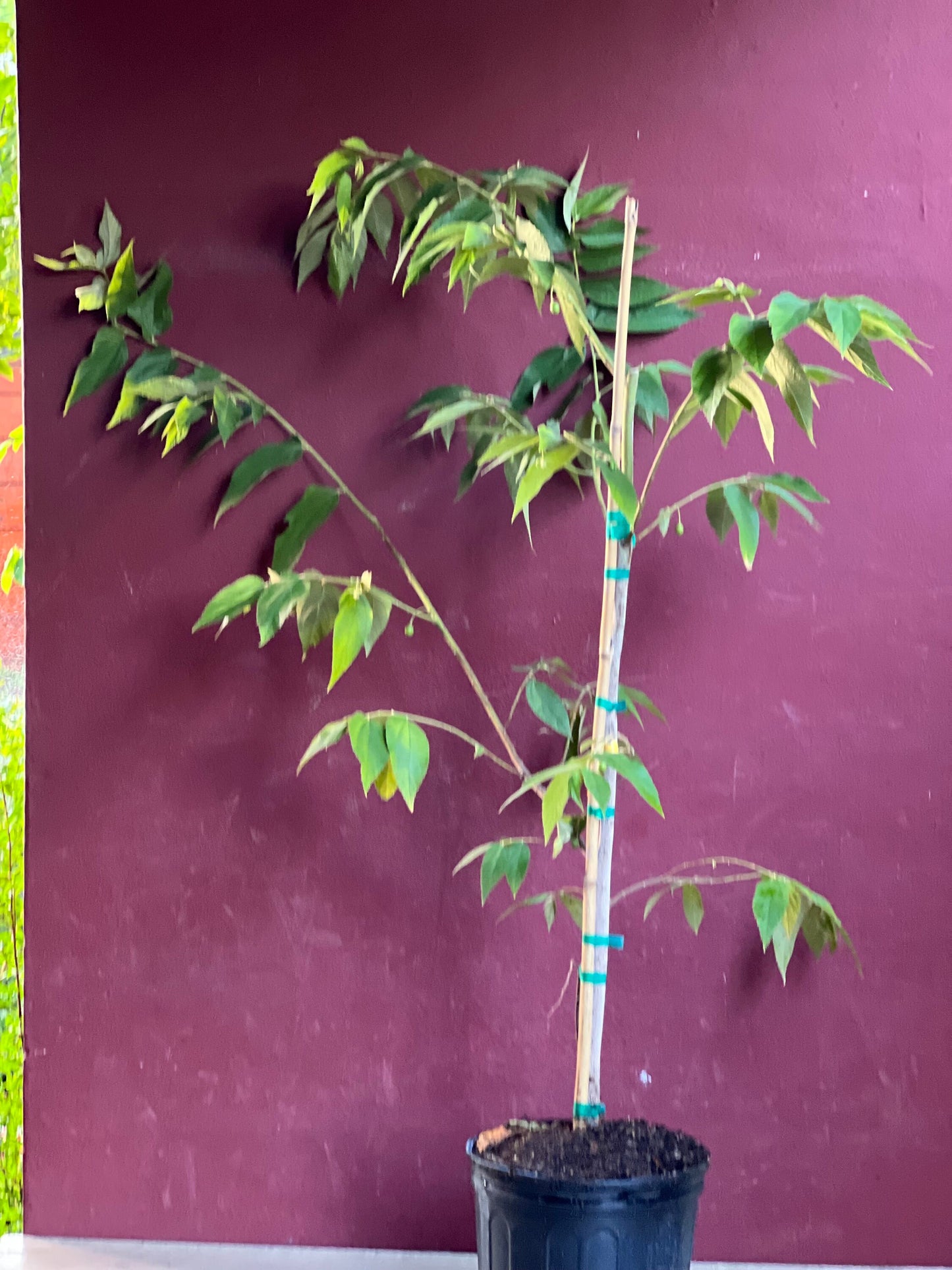Muntingia calabura ,Strawberry Tree in 10” Pot, Jamaican Strawberry, Kersen
Muntingia calabura ,Strawberry Tree in 10” Pot, Jamaican Strawberry, Kersen
Couldn't load pickup availability
Note : You will receive Jamaican Cherry in 10” Pot similar to the pictures
Muntingia calabura (Jamaica Cherry or Singapore Cherry) is a fast-growing, evergreen tree native to Central and South America, now widespread in tropical and subtropical regions. Known for its sweet, red berries that resemble cherries, this tree thrives in warm climates and produces small, white to pink flowers year-round. Muntingia calabura is low-maintenance and ideal for tropical gardens, producing edible fruit and offering ornamental value.
Care Guide for Muntingia Calabura
1. Light Requirements
- Full Sun to Partial Shade: Prefers full sun for optimal growth and fruiting but can tolerate partial shade in hotter climates. Aim for 6–8 hours of sunlight per day for best results.
2. Watering
- Moderate Watering: Once established, the tree is drought-tolerant but benefits from regular watering during the growing season. Water deeply, ensuring well-drained soil to avoid root rot. During dry spells, increase watering to keep the soil slightly moist.
- Avoid Overwatering: Let the soil dry out a bit between waterings, especially in cooler months.
3. Soil Requirements
- Well-Draining Soil: Prefers loamy or sandy soil with good drainage. Slightly acidic to neutral soil (pH 6.0-7.5) is ideal. Amend heavy or clayey soil with organic matter to improve drainage and nutrient content.
4. Temperature and Humidity
- Warm, Tropical to Subtropical Climate: Thrives in temperatures between 70°F to 95°F (21°C - 35°C). Not frost-tolerant, so protect from cold. Handles heat and humidity well, making it ideal for tropical regions.
- Humidity: Does well in moderate to high humidity, typical of tropical environments.
5. Fertilizing
- Light Fertilization: Generally requires minimal fertilization. Use a balanced, slow-release fertilizer (e.g., 10-10-10) in early spring to promote growth. Organic fertilizers like compost or well-rotted manure can also be used. Avoid over-fertilizing to prevent excessive foliage growth at the expense of fruiting.
6. Pruning and Maintenance
- Light Pruning: Requires minimal pruning, but you can shape the tree and remove dead or damaged branches. Pruning improves airflow and fruit production.
- Height Control: If needed, prune the top branches to control height, but avoid cutting too many flower-producing branches.
7. Pests and Diseases
- Pests: Generally pest-resistant but may attract aphids, mealybugs, or scale insects. Treat with insecticidal soap or neem oil as needed. Watch for fruit flies or bird damage when fruit ripens.
- Diseases: Not prone to major diseases but may suffer from fungal issues in overly wet conditions. Ensure good air circulation and avoid overhead watering to prevent fungal infections.
8. Pollination and Fruit Production
- Self-Pollinating: Muntingia calabura is typically self-pollinating but benefits from multiple trees nearby for increased fruit yield. It produces small, white to pink flowers that attract pollinators such as bees and birds.
- Fruit Harvesting: The tree produces red, cherry-like berries that are sweet and edible once ripe. Harvest when the berries are bright red and slightly soft. They can be eaten fresh, juiced, or made into jams.
9. Repotting (For Container-Grown Plants)
- Container Care: If growing in a pot, use a large container with good drainage and a well-draining potting mix enriched with organic matter. Repot every 1-2 years to refresh the soil and provide room for root growth.
- Indoor Growing: Place the tree in a bright spot with ample sunlight. Be mindful of its potential size and prune regularly to keep it manageable in containers.
10. Landscaping and Container Growing
- Landscaping: Muntingia calabura is excellent for tropical landscaping. It can be used as a shade tree, hedge, or border plant.
- Container Growing: Can also be grown in containers on patios or balconies. Regular pruning helps manage its size and shape.
Summary
Muntingia calabura is a fast-growing, low-maintenance tree prized for its sweet, edible red berries. It thrives in warm, tropical climates with full sun, well-draining soil, and moderate watering. The tree is generally pest-resistant and can be grown in both landscapes and containers. With its year-round fruiting and ornamental value, Muntingia calabura is a fantastic addition to any tropical garden. Proper care ensures a hardy, fruitful tree that provides both beauty and nutrition.
Share
